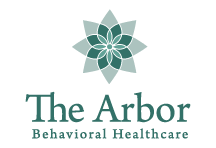In the past, many medical professionals believed that it was too hard to treat addicts who suffer from co-occurring conditions of mental illness, such as schizophrenia and bi-polar disorder. Many individuals have no idea what dual diagnosis is. This was a serious problem as research shows that over 50% of the people with mental illness such as schizophrenia and Bi-Polar disorder also self-medicate their symptoms with drug use. This makes them highly susceptible to addiction. Thankfully it is now possible to treat both the underlying mental illness as well as the addiction in an addict. The definition of dual diagnosis is co-occurring mental illness along with a substance addiction. The Arbor is one Texas facility well-equipped to treat clients suffering from a dual diagnosis.
How common is Dual Diagnosis?
Co-occurring addiction and mental illness occurs much more frequently than many realize. Statistics from Mental Health America show that greater than one-third of alcohol abusers have at least one mental disorder. Additionally, more than half of drug abusers also suffer from mental illness.
How is Dual Diagnosis treated?
Dual diagnosis does follow some of the same patterns of other addiction treatment plans. However the addict will receive treatment for both addiction and mental illness at the same time. Progress is usually much slower for individuals with dual disorders than for other addicts. This makes sense since two ailments must both be treated in order for the client to get well. One complication in those with dual diagnosis is that many of these mental health issues require treatment with medications that can be habit forming.
Four classifications
Among dual diagnosis professionals, there is a movement to classify the type of addiction and mental illness within dual diagnosis into four broad categories.
- Primary mental illness that leads to substance abuse,
- Substance abuse with associated symptoms of mental illness,
- Unrelated, co-existing mental illness and drug addiction, and
- Predispositions to mental illness and substance abuse due to common underlying contributing causes which can include homelessness, depression and alcoholism.
Regardless of which of these four categories any individual addict’s actual dual diagnosis may fall, and even though dual diagnosis is a difficult disorder to treat, the specialized care and support that are available in addiction treatment programs that offer dual diagnosis allow addicts to make progress in both areas. In order to heal, patients need a specific combination of treatment, education and support to become and remain addiction free.
Stability in sobriety and mental wellness is possible
Dual diagnosis does not need to be the end of someone’s life. It is false to assume that someone with dual diagnosis will continually fall into a pattern of instability that gives way to bouts of mental illness and substance abuse. While there is certainly a greater tendency for this to occur, with proper treatment and support this does not need to be the case. Since it is recognized that those with dual diagnosis are more likely to have greater difficulty with all stages of addiction treatment, additional assistance is often provided to those with dual diagnosis, including career skills training, job and relocation assistance and even halfway programs to help make the transition back into society easier for individuals with dual diagnosis. Arbor Behavioral Healthcare is well-suited for individuals suffering from dual diagnosis issues. Our medical and clinical staff, combined with our Continuum of Care, ensure that each patient is followed throughout their treatment plan. This ensures a consistency of support not often available to sufferers elsewhere.

